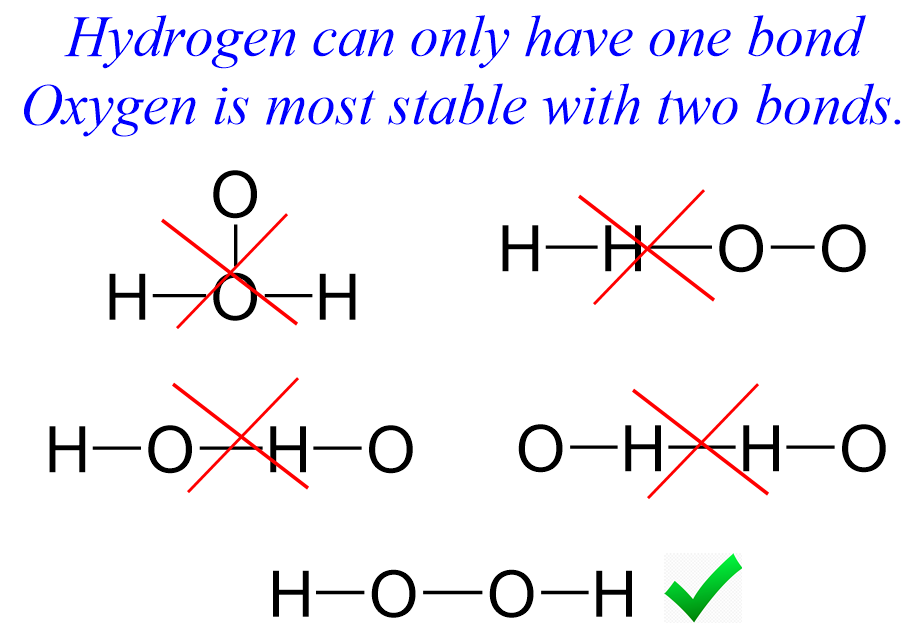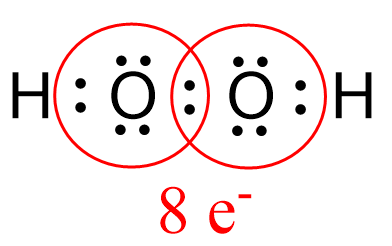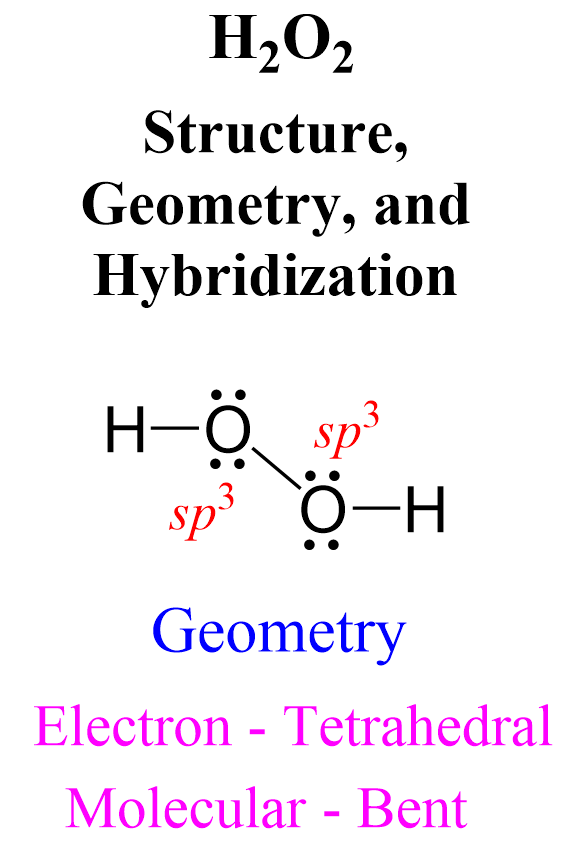In this post, we will be drawing the Lewis structure, and determining the geometry and hybridization of hydrogen peroxide, H2O2.
H2O2 Lewis Structure
The first thing we need to do when drawing a Lewis structure is determine the total number of valence electrons in the molecule. Remember, valence electrons are those in the outermost principal energy level. For example: Na – 1s22s22p63s1, Cl – 1s22s22p63s23p5
The number of valence electrons, for main group elements, corresponds to their group number in the periodic table:

For d block elements, the outermost d electrons are also counted as valence electrons (ns + (n-1)d). For example, iron has eight valence electrons: Fe – 1s22s22p63s23p64s23d6.
So, oxygen is in group 6A, and therefore, it has 6 valence electrons, and hydrogen has one electron. In total, there are 2 x 6 + 2 x 1 = 14 valence electrons.
Next, we need to connect the atoms in the correct order and add the electrons as bonds and lone pairs.
In short, these are the steps you need to follow for drawing a Lewis structure:
1. Write the correct skeletal structure for the molecule.
* Hydrogen atoms are always terminal (only one bond)
* Put more electronegative elements in terminal positions
2. Sum the valence electrons from all the atoms.
3. Use a pair of electrons to form a bond between each pair of bound atoms.
4. Add the remaining electrons to satisfy the octet for a more electronegative atom first.
5. If any atoms lack an octet, make a double or triple bond to give them an octet.
Out of the 14 electrons, six are used to make three bonds between the four atoms:

This is the only possible connectivity of the atoms because hydrogen can only have one bond and oxygen, even though can have three, has two bonds in its standard valency state.

Try memorizing the bonding and formal charge patterns to make this process easier:

There are 8 electrons left which go to the oxygens as two lone pairs on each:

Next, we check if the oxygens have octets, and two bonds with two lone pairs indeed satisfy the octet of each oxygen:

Geometry of H2O2
The steric number of both oxygen atoms is 4 (connected to two atoms and has two lone pairs), and therefore, the electron geometry is tetrahedral and the molecular geometry is bent or V-shaped.

Hybridization of H2O2
Steric number four indicates sp3 hybridiation for both oxygen atoms in H2O2.
Check this 99-question multiple-choice quiz on Geometry and Hybridization:
Check Also
- Lewis Dot Symbols
- The Ionic Bond
- The Covalent Bond
- Sigma and Pi Bonds
- Electronegativity and Bond Polarity
- The Octet Rule
- Formal Charges
- Lewis Structures and the Octet Rule
- Lewis Structures Practice Problems
- Resonance Structures
- The VSEPR Model
- VSEPR Theory Practice Problems
- Hybridization of Atomic Orbitals
- sp, sp2, sp3, sp3d, and sp3d2 Hybridization Practice Problems

